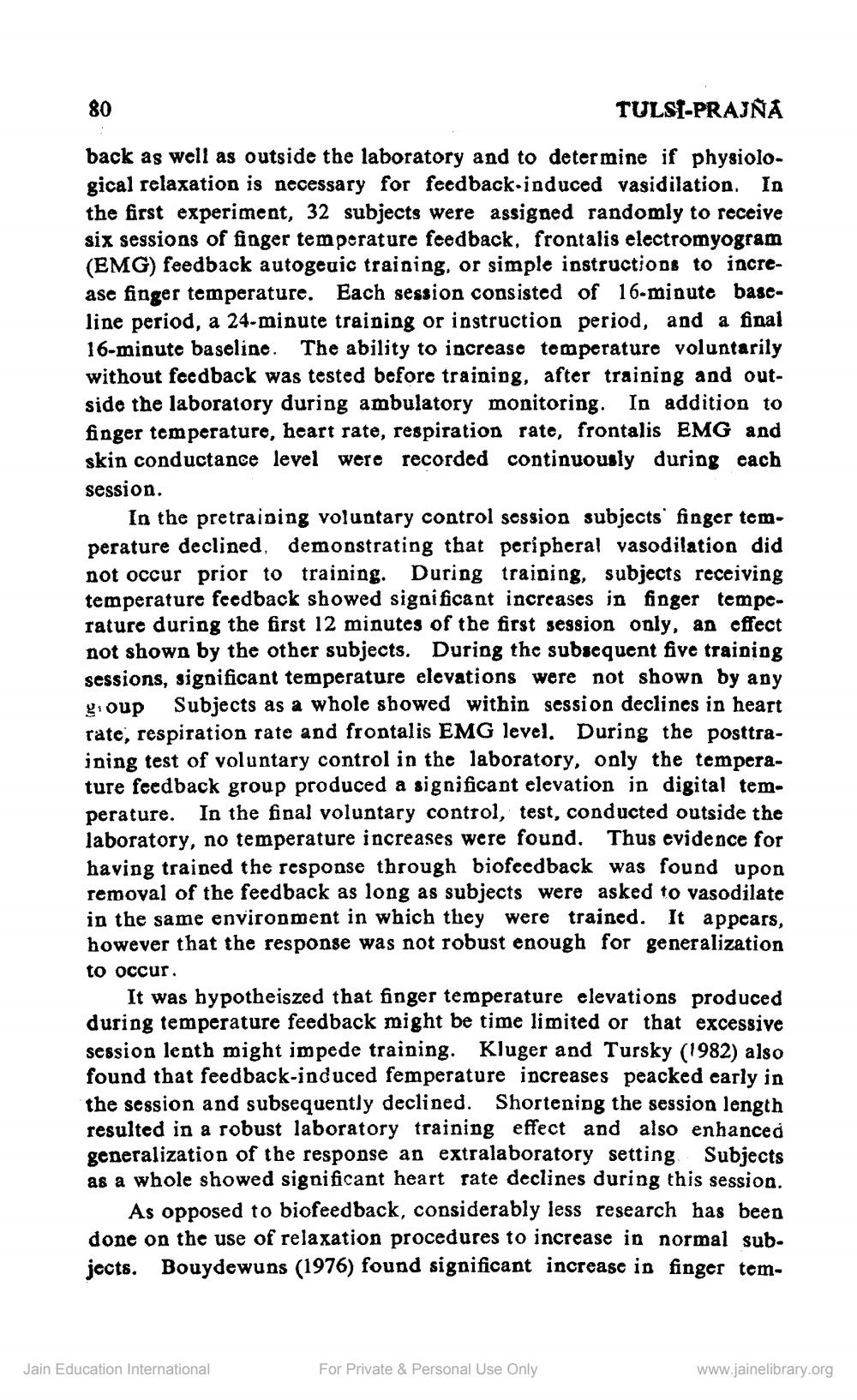________________
80
TULSI-PRAJNA
back as well as outside the laboratory and to determine if physiological relaxation is necessary for feedback-induced vasidilation. In the first experiment, 32 subjects were assigned randomly to receive six sessions of finger temperature feedback, frontalis electromyogram (EMG) feedback autogeuic training, or simple instructions to increase finger temperature. Each session consisted of 16-minute baseline period, a 24-minute training or instruction period, and a final 16-minute baseline. The ability to increase temperature voluntarily without feedback was tested before training, after training and outside the laboratory during ambulatory monitoring. In addition to finger temperature, heart rate, respiration rate, frontalis EMG and skin conductance level were recorded continuously during each session.
In the pretraining voluntary control session subjects' finger tom. perature declined, demonstrating that peripheral vasodilation did not occur prior to training. During training, subjects receiving temperature feedback showed significant increases in finger temperature during the first 12 minutes of the first session only, an effect not shown by the other subjects. During thc subsequent five training sessions, significant temperature elevations were not shown by any gioup Subjects as a whole sbowed within session declines in heart rate, respiration rate and frontalis EMG level. During the posttraining test of voluntary control in the laboratory, only the temperature feedback group produced a significant elevation in digital temperature. In the final voluntary control, test, conducted outside the laboratory, no temperature increases were found. Thus evidence for having trained the response through biofeedback was found upon removal of the feedback as long as subjects were asked to vasodilate in the same environment in which they were trained. It appears, however that the response was not robust enough for generalization to occur.
It was hypotheiszed that finger temperature elevations produced during temperature feedback might be time limited or that excessive session lenth might impede training. Kluger and Tursky (1982) also found that feedback-induced femperature increases peacked early in the session and subsequently declined. Shortening the session length resulted in a robust laboratory training effect and also enhanced generalization of the response an extralaboratory setting Subjects as a whole showed significant heart rate declines during this session.
As opposed to biofeedback, considerably less research has been done on the use of relaxation procedures to increase in normal sub. jects. Bouydewuns (1976) found significant increase in finger tem
Jain Education International
For Private & Personal Use Only
www.jainelibrary.org




